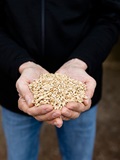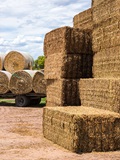North West Tasmania
20 May 2020
| Date | Tas 23 | Tas 22 | Tas 5YA |
|---|---|---|---|
| 06-Jan-23 | 263 | 240 | 259 |
| 13-Jan-23 | 263 | 250 | 261 |
| 20-Jan-23 | 270 | 250 | 228 |
| 27-Jan-23 | 270 | 250 | 233 |
| 03-Feb-23 | 270 | 250 | 231 |
| 10-Feb-23 | 278 | 250 | 224 |
| 17-Feb-23 | 279 | 250 | 223 |
| 24-Feb-23 | 280 | 250 | 222 |
| 03-Mar-23 | 280 | 250 | 222 |
| 10-Mar-23 | 280 | 250 | 223 |
| 17-Mar-23 | 280 | 250 | 223 |
| 24-Mar-23 | 280 | 250 | 223 |
| 31-Mar-23 | 278 | 250 | 223 |
| 07-Apr-23 | 278 | 250 | 223 |
| 14-Apr-23 | 278 | 250 | 223 |
| 21-Apr-23 | 278 | 250 | 223 |
| 28-Apr-23 | 278 | 253 | 221 |
| 05-May-23 | 278 | 253 | 221 |
| 12-May-23 | 278 | 253 | 222 |
| 19-May-23 | 278 | 253 | 224 |
| 26-May-23 | 280 | 253 | 224 |
| 02-Jun-23 | 280 | 255 | 224 |
| 09-Jun-23 | 280 | 256 | 222 |
| 16-Jun-23 | 279 | 258 | 226 |
| 23-Jun-23 | 278 | 258 | 226 |
| 30-Jun-23 | 278 | 258 | 230 |
| 07-Jul-23 | 273 | 260 | 226 |
| 14-Jul-23 | 273 | 260 | 226 |
| 21-Jul-23 | 273 | 260 | 232 |
| 28-Jul-23 | 268 | 260 | 234 |
| 04-Aug-23 | 268 | 260 | 236 |
| 11-Aug-23 | 268 | 263 | 239 |
| 18-Aug-23 | 268 | 263 | 247 |
| 25-Aug-23 | 268 | 263 | 247 |
| 01-Sep-23 | 268 | 258 | 246 |
| 08-Sep-23 | 258 | 246 | |
| 15-Sep-23 | 258 | 246 | |
| 22-Sep-23 | 258 | 246 | |
| 29-Sep-23 | 258 | 246 | |
| 06-Oct-23 | 258 | 246 | |
| 13-Oct-23 | 258 | 246 | |
| 20-Oct-23 | 258 | 246 | |
| 27-Oct-23 | 258 | 246 | |
| 03-Nov-23 | 258 | 246 | |
| 10-Nov-23 | 258 | 246 | |
| 17-Nov-23 | 258 | 260 | |
| 24-Nov-23 | 263 | 261 | |
| 01-Dec-23 | 263 | 261 | |
| 08-Dec-23 | 263 | 261 | |
| 15-Dec-23 | 263 | 259 | |
| 22-Dec-23 | 263 | 259 | |
| 29-Dec-23 | 263 | 266 |
Notes:
Change in price is the change since the last report. Hay quoted is sourced and delivered locally, GST exclusive unless stated otherwise. It should be noted that local prices quoted may not be the cheapest available, sourcing it from another region may be more affordable, and buyers are encouraged to evaluate all options. Prices are indicative to a mid-range shedded product, and based on the best indication of market value at the time of reporting. It should be noted there is a wide variation in quality of hay, prices for a mid-range product will not reflect the weighted average of trade. Prices will naturally vary based on the product quantity and quality, buyer/seller relationship and the size of the trade.The hay report has been commissioned by Dairy Australia to provide an independent and timely assessment of hay markets in each dairy region. This report is created using data provided by the Australian Fodder Industry Association (AFIA). It should be remembered that actual prices may vary for quality or other reasons. Whilst all reasonable steps have been taken to ensure the accuracy of the information contained in this report, Dairy Australia disclaims all liability to the fullest extent permitted by Australian law for any inadvertent errors and for any losses or damages stemming from reliance upon its content. Dairy Australia recommends all persons seek independent advice and, where appropriate, advice from a qualified advisor before making any decisions about changes to business strategy.
Commentary
- Drier conditions continue this week, with the far northwest coast seeing the lowest rainfall totals of 15mm of rain, and most other areas seeing around 25mm of rain for the week.
- Another drier week this week, with limited falls across the coastal region helping with some of the issues with bogged pastures. Grass is still growing and continuing to provide green feed options, though the cold weather is keeping that growth slow.
- Oat crops are being sown in parts of the northwest coast into good subsoil moisture. These crops are slated for dairy feed next winter. In the more southern parts of the region, clover and ryegrass are being direct drilled to boost the hay production paddocks.
- Slug and snail infestation in pastures and paddocks continues to be reported. These will need to be managed carefully as ongoing wet conditions hinder the ability of producers to eradicate the pests. Contamination of pasture feed or future silage is also of concern.
- Enquiries remain fairly stable, cold conditions are being somewhat tempered by some good green feed availability, so demand is not exceeding available supply. Quite a bit of available fodder is heading to the south of the state, where conditions are much drier than usual for this time of year, and herds are needing supplementary feed options.
- No change to pricing this week.
- Cereal hay: +/-0 ($255 to $280/t) Prices remain steady this week.
- Lucerne hay: +/-0 ($320 to $370/t) Prices remain steady this week.
- Straw: +/-0 ($100 to $140/t) Prices remain steady this week.
- Pasture hay: +/-0 ($225 to $255/t) Prices remain steady this week.
- Please note: Unless stated otherwise, prices are per tonne, sourced and delivered locally. The price range indicated is for feeds of varying quality with the price range generally indicative of quality of feed. We recommend feed testing and viewing of fodder before purchase to be sure of the quality of feed.

